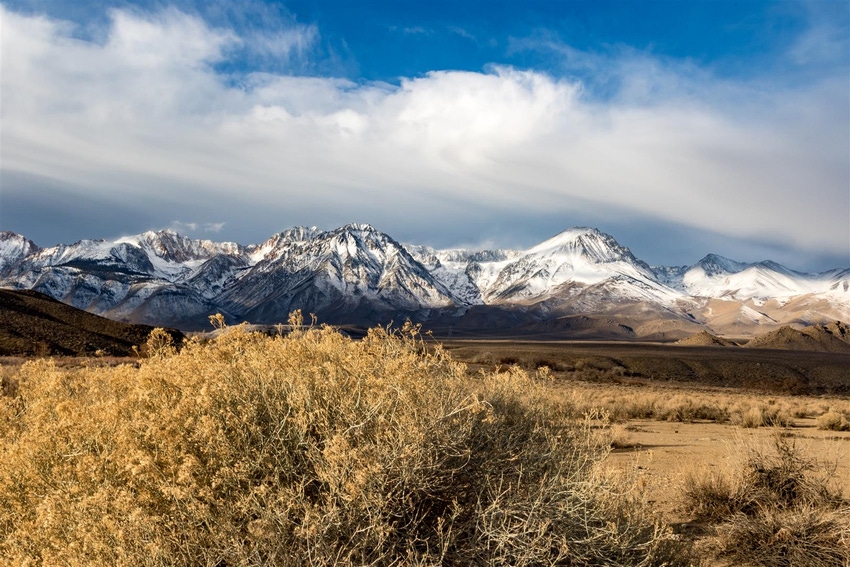
California snow pack falls short of 'average' for March 30
Survey results showed annual Sierra snow depths ranging from 58 inches to over 75 inchesThe northern Sierra Nevada generally has better snow conditions than does the central and southern SierraThe survey helps determine agricultural water allocations throughout the year in California

This year’s snowpack is a marked improvement from what California Department of Water Resources (DWR) officials measured last year.
In fact last year officials didn’t need to remove the tape measure from the tool box as they were already walking on dry, dead grass at the research station high in the Sierra Nevada.
This year it took a measuring stick to find the snow depth.
When Frank Gehrke, DWR’s snow surveys program chief, was done with his measurement at Phillips Station near Lake Tahoe the news was respectable – 58.4 inches of snow at the 6,800 foot level.
The water content in the snow measured 26 inches, about 97 percent of the March 30 average.
The “Godzilla El Nino” that was thought by many to be the drought-busting miracle California needed did help, but it didn’t leave the Sierra with the kind of snowpack history records can happen.
Nevertheless, conditions are much better than the bare ground discovered at the 6,800-foot level 366 days ago.
Overall, water content in the state’s snowpack is said to be 87 percent of the historical average for March 30, according to the DWR.
Electronic readings of northern Sierra Nevada snow conditions found 28.1 inches of water content (97 percent of average for March 30), 25.2 inches in the central region (88 percent of average) and 19.3 inches in the southern region (72 percent of average).
In normal years, the snowpack supplies about 30 percent of California’s water needs as it melts in the spring and early summer. The greater the snowpack water content, the greater the likelihood California’s reservoirs will receive ample runoff as the snowpack melts to meet the state’s water demand in the summer and fall.
Gehrke’s message during what has become an annual media event was essentially the same one he delivered four weeks ago at Phillips: “While for many parts of the state there will be both significant gains in reservoir storage and stream flow, the effects of previous dry years will remain for now.”
Just one day earlier, Shasta Lake in northern California achieved a reservoir level not seen in several year as storage behind the dam rose to four million acre feet, just 550,000 acre feet short of capacity.
About the Author(s)
You May Also Like





